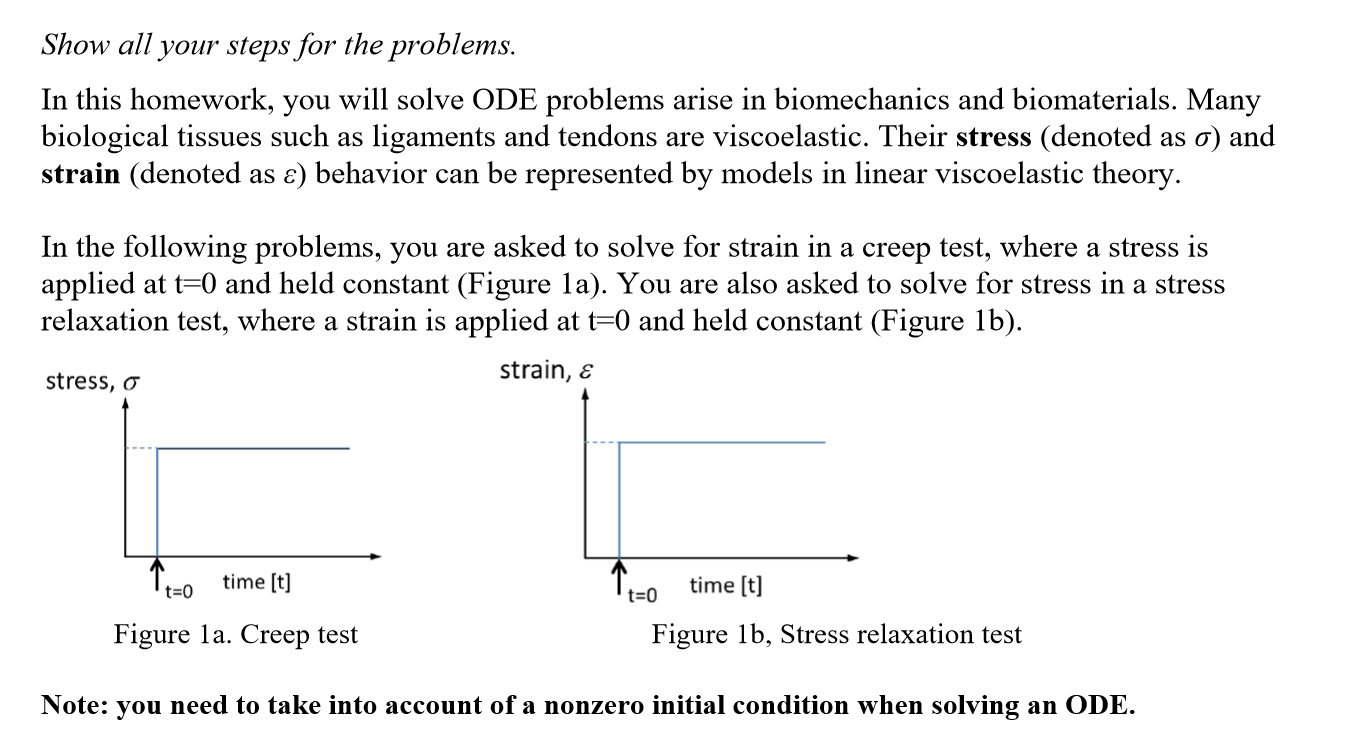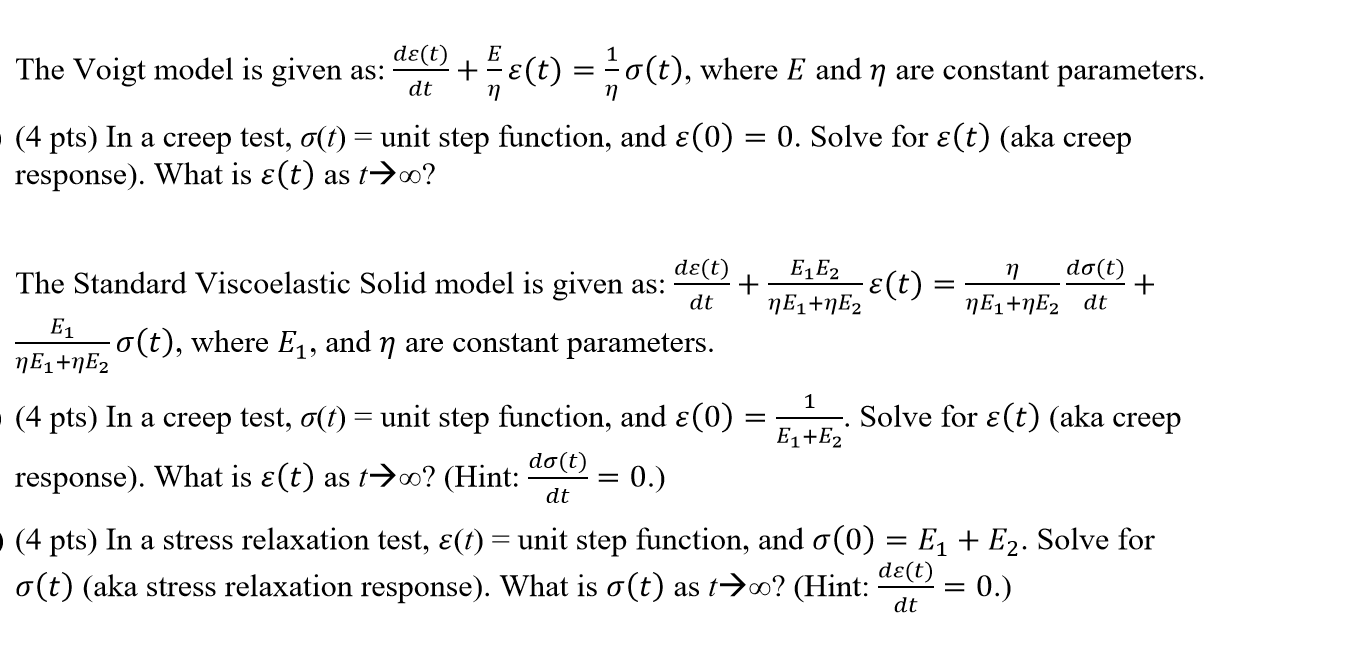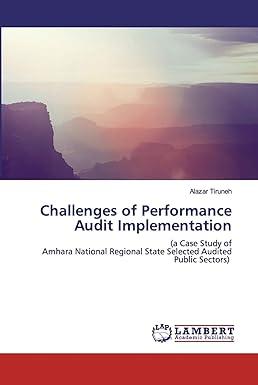Answered step by step
Verified Expert Solution
Question
1 Approved Answer
Show all your steps for the problems. In this homework, you will solve ODE problems arise in biomechanics and biomaterials. Many biological tissues such as


Show all your steps for the problems. In this homework, you will solve ODE problems arise in biomechanics and biomaterials. Many biological tissues such as ligaments and tendons are viscoelastic. Their stress (denoted as o) and strain (denoted as ) behavior can be represented by models in linear viscoelastic theory. In the following problems, you are asked to solve for strain in a creep test, where a stress is applied at t-0 and held constant (Figure la). You are also asked to solve for stress in a stress relaxation test, where a strain is applied at t-0 and held constant (Figure 1b) strain, a stress, o time [t] time [t] t 0 t-0 Figure la. Creep test Figure 1b, Stress relaxation test Note: you need to take into account of a nonzero initial condition when solving an ODE. de(t) as: E (t) o(t), where E and n are constant parameters. The Voigt model is given dt (4 pts) In a creep test, o)unit step function, and e(0) = 0. Solve for e(t) (aka creep response). What is E(t) as tao? d(t) E1E2 d(t) The Standard Viscoelastic Solid model is given + as: dt nE1+E2dt E1tnE t), where E1, and n are constant parameters. 1 Solve for (t) (aka creep (4 pts) In a creep test, o(t) = unit step function, and e(0) E1+E2 response). What is E(t) as t-o? (Hint: 2 = 0.) dt (4 pts) In a stress relaxation test, E)unit step function, and o(0) = E1 + E2. Solve for o(t) (aka stress relaxation response). What is o(t) as to? (Hint: 0.) dt Show all your steps for the problems. In this homework, you will solve ODE problems arise in biomechanics and biomaterials. Many biological tissues such as ligaments and tendons are viscoelastic. Their stress (denoted as o) and strain (denoted as ) behavior can be represented by models in linear viscoelastic theory. In the following problems, you are asked to solve for strain in a creep test, where a stress is applied at t-0 and held constant (Figure la). You are also asked to solve for stress in a stress relaxation test, where a strain is applied at t-0 and held constant (Figure 1b) strain, a stress, o time [t] time [t] t 0 t-0 Figure la. Creep test Figure 1b, Stress relaxation test Note: you need to take into account of a nonzero initial condition when solving an ODE. de(t) as: E (t) o(t), where E and n are constant parameters. The Voigt model is given dt (4 pts) In a creep test, o)unit step function, and e(0) = 0. Solve for e(t) (aka creep response). What is E(t) as tao? d(t) E1E2 d(t) The Standard Viscoelastic Solid model is given + as: dt nE1+E2dt E1tnE t), where E1, and n are constant parameters. 1 Solve for (t) (aka creep (4 pts) In a creep test, o(t) = unit step function, and e(0) E1+E2 response). What is E(t) as t-o? (Hint: 2 = 0.) dt (4 pts) In a stress relaxation test, E)unit step function, and o(0) = E1 + E2. Solve for o(t) (aka stress relaxation response). What is o(t) as to? (Hint: 0.) dt
Step by Step Solution
There are 3 Steps involved in it
Step: 1

Get Instant Access to Expert-Tailored Solutions
See step-by-step solutions with expert insights and AI powered tools for academic success
Step: 2

Step: 3

Ace Your Homework with AI
Get the answers you need in no time with our AI-driven, step-by-step assistance
Get Started


